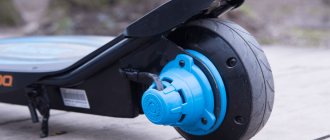Owners of household plots and summer cottages are often faced with the problem of preparing to store a bountiful harvest. Using ordinary household appliances, it is impossible to quickly process large quantities of berries and fruits; at the same time, powerful units have a considerable cost. The way out of this situation will be a high-performance juicer, made with your own hands at home.
How to make an apple juicer with your own hands
Assembling the juicer yourself will not be difficult due to its relatively simple design. However, in order to properly manufacture this device, it is necessary to study its constituent elements and functional features.
Operating principle of juice extraction devices
Juice is obtained as a result of pressure applied to the embedded raw material - fruits or berries. This process can be simultaneous or sequential, for example, when using screw structures, the finished product is extracted directly during the grinding of raw materials. However, the assembly of such models is not easy and is accompanied by significant costs. In contrast, centrifugal devices first perform grinding in a centrifuge and only then pass the fruit through a press.
Depending on the principle of operation, juicers are divided into several types:
- pneumatic;
- mechanical;
- hydraulic;
- electrohydraulic.
Most often, a mechanical type device is assembled at home, due to its simplest assembly. In this design, a piston driven by a simple screw mechanism exerts pressure on the raw material during the working process.
The fruits are placed in a perforated tank, where, as a result of strong pressure, they release juice. The finished drink flows into the tray through holes punched in the walls of the container.
Structural elements
Regardless of what type of juicer (centrifugal or auger) you plan to assemble, you will need the following components:
- bunker for storing raw materials;
- mechanism for grinding and squeezing;
- juice purification filter;
- reservoir for collecting the pomace.
Further complexity of the design is due to the technical capabilities of the unit.
The best option is manual grinding followed by processing with a screw press. More complex models have a mechanically driven chopper.
To manufacture a screw juicer that simultaneously performs grinding and squeezing, more financial and time costs will be required.
DIY apple juicer made from a jack
The design, made of a jack, will allow you to squeeze out juice without any physical effort.
What you will need
To manufacture the device you will need several elements:
- Support – holds the juicer on the ground and is responsible for its balance. It can be assembled from both wooden and metal components.
- The main body can have any shape depending on the materials of manufacture. The volume of this element determines the number of fruits simultaneously loaded for processing.
- The grid that fixes the raw materials prevents slipping that occurs due to a large amount of squeezed out juice.
- A device for pressure - it is under its influence that the fruits release juice. It is desirable that this mechanism be of the piston type.
- A means of assisting in the lifting of a piston or jack.
- Elements that make work easier: pressure jack and screw handle.
- The vessel where the finished juice will flow. For this purpose, it is best to use containers with a large volume exceeding the amount of product received at one time; this will prevent it from spilling.
Step-by-step instruction
Manufacturing sequence:
- Choosing a jack. For assembly, you can take either a hydraulic or manual type. The advantage of the first is facilitating work and providing convenience, the disadvantage is absolute stationarity. While the manual jack after squeezing the juice must be returned for use for its intended purpose.
- Creating a frame. The structure must be steel and capable of supporting the weight of a pallet, barrel and fruit. It is best if it is welded, since the power of the juicer depends on its strength.
- Making a barrel for squeezing, which can be wooden or metal, but must have holes at the bottom and sides for juice to drain. The finished barrel is attached to the frame: the metal one is welded, the wooden one is installed on the crossbars and fixed with metal fasteners, excluding the slightest slipping and displacement.
- Making a stop for a jack. This is usually done by connecting several wooden boards together.
- Creating gaskets from drainage and a container/tray into which the finished juice will flow.
- Jack connection. The element is placed on the stop and set in motion manually.
Before use, the juicer you make yourself must be thoroughly washed and dried.
Recommendations for assembling presses
To make a juice press you need to consider the following points:
- Juice container. You can use a tank or a large pan, and install a tap at the bottom to drain,
- If a wooden barrel is used, it should be made of parquet slats,
- If the washing machine body is used, it must be clean and sealed, free of rust and mold,
- Apparatus body. The simplest option is a pyramid of wooden latticework.
To ensure uniform extraction of juice, finely chopped fruits are placed in clean bags or transferred with a soft cloth. If this is not done, a DIY juice press will leave wet pulp and a large amount of waste. You can cut apples using an ordinary knife or a special chopper. The device can be purchased, but more often it is made independently and built into the pressing apparatus.
DIY apple juicer from a washing machine
An old washing machine is ideal for creating a centrifugal-type unit for processing berries, fruits and vegetables.
Among the many functions of this household appliance is a spinner, which allows you to quickly squeeze out large quantities of raw materials. A machine with both vertical and horizontal loading is suitable for work, but only if it has a belt drive, since models with direct drive are not suitable for this purpose. Front-loading equipment will need to be placed with the hatch facing up.
What you will need
Before starting assembly, you need to prepare the following:
- fastening: 3 mm bolts and nuts;
- 2 metal mesh (30 × 6);
- container for collecting juice;
- rubber plugs;
- drain pipe;
- Bulgarian;
- spanners;
- welding machine;
- Screwdriver Set;
- pliers;
- drill;
- metal scissors;
- hammer.
In addition, you will need support bars on which the washing machine will be placed and secured.
Step-by-step manufacturing instructions
Assembling a juicer from a washing machine should begin by preparing the body, following the algorithm "563"[/img]
- Remove the drive belt from the pulley and pull it towards you.
- Bend back the sealing rubber, remove the cuff and clamp.
- After unscrewing the bolts, remove the shock absorbers.
- Remove all elements that prevent the tank from being removed from the housing.
- Disassemble the tank: unscrew the bolts, release the plastic latches, and then remove its upper half. Cut the non-separable tank into two parts using a grinder.
- Thoroughly clean all parts from rust and scale. Close with rubber plugs or weld all holes that will not be useful in the future. Leave only those through which the finished juice will flow.
- Weld all the holes in the drum, as they are too large, and drill a large number of small holes around the perimeter.
- Assemble the tank, securing it with screws. In a non-separable tank, first make holes for self-tapping screws.
- Insert the tank into its original place in the body, and also return all the removed elements: springs, shock absorbers and sealing rubber.
Next you need to modify the drum, for this you will need:
- Make a grater by placing pre-prepared mesh strips in a circle between the ribs of the drum.
- Secure them with small screws.
- Sharpen the blade (strike), which will serve as a grinding device.
- Attach a pipe to the drain hole.
- Connect the switch and motor to the finished structure, following the electrical diagram.
Making a juicer will not require a lot of additional financial costs, since most of the parts will be removed from the washing machine itself.
In one hour, a machine assembled in this way allows you to obtain up to 12 liters of the finished product. In this case, the raw material does not require preliminary cleaning and grinding; it is enough to wash it and load it into the drum.
From an activator type machine
A centrifugal juicer can also be made from an activator-type washing machine. The activator and shaft are removed from the bottom of the tank, and a shaft of the required diameter is installed. Three knives are installed on the shaft thread with nuts at an angle of 60 degrees. The drain hole closes. A stainless steel mesh with a mesh size of approximately 1.5 mm is placed on the wall of the centrifuge with an overlap of 40-50 mm. A complete rubber cap, plugged with a stopper, is placed on the bottom. Everything is washed with baking soda. The timer relay is turned off or its toggle switch is jammed.
Several apples are dropped into the tank onto moving knives. The fruits are crushed for 20-30 minutes. At a time, transfer no more than 3 liters of the resulting puree into the centrifuge so that it does not spill out. After 2-3 minutes, the mesh containing the waste is removed.
The assembled apparatus prepares 10-12 liters of juice with pulp per hour and works with juicy fruits. To remove sediment, the juice is allowed to settle and then passed through cheesecloth.
DIY apple juicer
As a rule, winemakers prefer pressing units because during operation they do not heat the pulp and do not crush the seeds.
What you will need
To independently assemble a classic press, it is not necessary to use special drawings and a welding machine. The structure can be made of wood using conventional tools and fasteners, namely:
- hacksaw for metal or wood;
- hammer;
- Screwdriver Set;
- bolts, nuts, self-tapping screws;
- pliers.
Press components:
- boards, wooden blocks or slats;
- stainless steel sheet;
- barrel or tank;
- valve;
- piston-bending;
- metal channel.
It is desirable that the wooden elements be made of oak, beech or birch, since due to their biological activity, conifers change the taste of the sap.
Drainage gratings should not be made of chipboard, since dust containing phenol-formaldehyde adhesive will enter the finished product.
Step-by-step manufacturing instructions
The assembly algorithm for the press unit is as follows:
- To create a stable structure - for this purpose you can use not only metal material, but also wood. At the same time, the upper jumper must be made of a metal strip.
- Weld the nut to the jumper located on the top bar. In the future, a screw will be rotated through it, providing a directed load.
- Attach a platform to the base of the screw that exerts pressure on the raw materials in the hopper.
- Make a perforated tank equipped with holes responsible for drainage of juice.
- Attach filter cloth to the walls of the tank.
- Install a tank at the bottom of the structure that will receive the finished product.
Important! It is recommended to use lavsan or polyester, which has a mesh structure, as a material for filtering juice.
A properly made juicer will last for many years and will help process a large volume of harvest.
Previous
Apple processing











